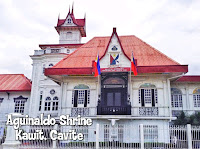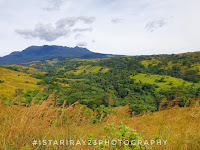**Tukneneng: A Popular Filipino Street Food**
Tukneneng is a beloved Filipino street food that is a variation of the famous "kwek-kwek." It is essentially a deep-fried hard-boiled egg covered in an orange-colored batter made of flour and annatto powder, giving it its distinct hue. The name "Tukneneng" is believed to have evolved from the term "itlog" (egg) and "penoy" (another type of boiled egg), combined to form the playful moniker.
This crispy snack is often skewered on bamboo sticks, making it convenient to eat on the go. Tukneneng is commonly served with a vinegar dipping sauce mixed with chopped onions and chili for an extra kick of flavor. Some vendors also offer sweet and spicy dipping sauces to cater to varying taste preferences.
What makes Tukneneng a popular choice among locals is its affordability, accessibility, and satisfying crunchiness. It's a favorite merienda (snack) option for many Filipinos, enjoyed both by young students looking for a quick and tasty treat after school and workers seeking a satisfying snack break during the day.
Tukneneng is not only a delicious snack but also a symbol of Filipino street food culture, reflecting the creativity and resourcefulness of local food vendors in concocting innovative dishes that appeal to the Filipino palate. So, when you're strolling around the bustling streets of the Philippines, be sure to try a serving of Tukneneng for a flavorful and crunchy snacking experience!
Tukneneng is a Filipino street food made from deep-fried battered hard-boiled eggs or itlog Pugo eggs.
Here's a simple recipe for making Tukneneng:
**Ingredients:**
- 6-8 hard-boiled eggs, peeled
- 1 cup all-purpose flour
- 1/2 cup cornstarch
- 1 tsp baking powder
- 1 tsp salt
- 1/2 tsp ground black pepper
- 1 cup water
- 1 cup bread crumbs
- Cooking oil for frying
- Bamboo skewers or toothpicks
**Instructions:**
1. In a bowl, mix the all-purpose flour, cornstarch, baking powder, salt, pepper, and water to create a smooth batter. Adjust the consistency by adding more water if needed.
2. Place the bread crumbs in a separate shallow dish.
3. Heat the cooking oil in a deep pan or pot over medium heat.
4. Insert a bamboo skewer or toothpick into each hard-boiled egg.
5. Dip each egg into the batter, making sure it is completely coated.
6. Roll the battered egg in the bread crumbs until evenly coated.
7. Carefully lower the breaded egg into the hot oil and fry until golden brown. You can fry 2-3 eggs at a time, depending on the size of your pot.
8. Once the Tukneneng is fried to a golden crisp, remove it from the oil and place it on a paper towel-lined plate to drain excess oil.
9. Serve the Tukneneng with your choice of dipping sauce, such as vinegar with garlic, sweet chili sauce, or banana ketchup.
10. Enjoy your homemade Tukneneng as a delightful Filipino street food snack that's crispy on the outside and creamy on the inside.
How to make Vinegar Sawsawan or dippings with cucumber for your tukneneng street food.
**Vinegar Dipping Sauce with Cucumbers for Tukneneng:**
**Ingredients:**
- 1/2 cup vinegar (cane, white, or coconut vinegar)
- 1 small red onion, finely chopped
- 1-2 cloves garlic, minced
- 1 small cucumber, diced
- Salt and pepper to taste
- Sugar (optional)
**Instructions:**
1. In a bowl, combine the vinegar, chopped red onion, minced garlic, and diced cucumber.
2. Season the mixture with salt and pepper according to your taste preference. You can also add a pinch of sugar if you prefer a slightly sweet-sour taste.
3. Stir the ingredients well to combine and let the flavors blend together. You can adjust the seasoning by adding more vinegar, salt, or pepper as needed.
4. Let the vinegar dipping sauce sit for at least 15-20 minutes before serving to allow the flavors to meld together.
5. Serve the vinegar dipping sauce with your freshly cooked Tukneneng as a flavorful and refreshing condiment. The crunchiness of the cucumber adds a nice texture contrast to the crispy Tukneneng.
6. Enjoy your Tukneneng with this zesty vinegar dipping sauce featuring the cool and crisp addition of cucumbers! It's a delightful combination that enhances the overall eating experience. Dip your Tukneneng into the sauce and savor the burst of flavors with every bite. 🥒🍅
Have fun cooking and indulging in this crispy and tasty street food treat! 🍳🔥
🍽️✨
#TuknenengDelight,
#StreetFoodsSensation,
#FoodieAdventures,
#ItlogPugo, #StreetFoods,
#FoodPorn, #Tukneneng, #KwekKwek,
#SukangSawsawan, #Sawsawan,
#VinegarDippings,
#istariray23foodphotography,
#istariray23menu,
#istariray23moments,














































































.jpg)
.jpg)














